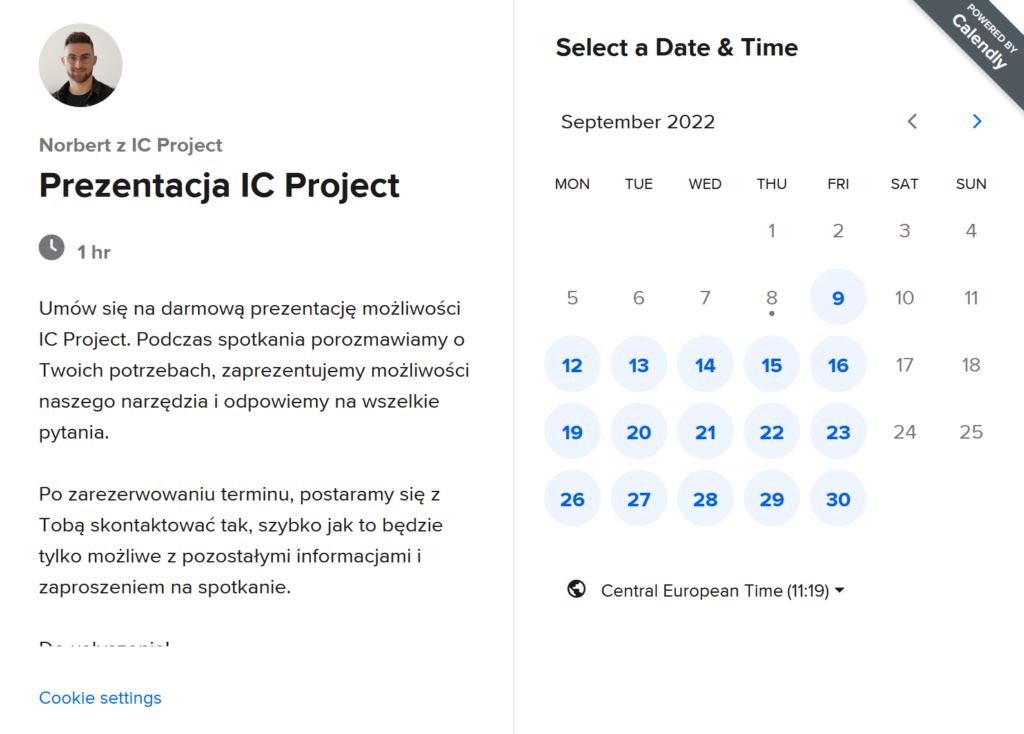International project management is a field that presents a number of challenges due to differences in culture, language and time zones. In this article, we will delve deeper into the key aspects of effective project management in a global context, looking at strategies and practices that can contribute to success in this area.
A global language of communication – the key to effective collaboration
We will begin by highlighting the role of a global communication language as the foundation for effective project management in an international environment. Communication is one of the key elements of project success, and in an international context there is a need to develop a uniform language of communication. Unifying this aspect eliminates language barriers, enabling information to be understood in a uniform manner, which in turn promotes effective coordination within the project team.
How important are cultural differences in international environments?
Managing projects in an international environment requires full understanding and consideration of cultural differences. The integration of a team made up of individuals representing different cultures becomes a key aspect of achieving project success. Knowledge of the values, social norms, business customs and ways of working in a given culture allows for better cooperation with local partners and effective adaptation of the project strategy to the specifics of a given market.
How can unfamiliarity with cultural differences generate negative business impact? We learn from mistakes and real situations.
The analysis of business cases that show the consequences of not taking cultural differences into account provides valuable lessons for companies planning international projects. Examples of companies that did not take sufficient action related to local customs or conducted insufficient research show how a lack of understanding of culture can generate negative business consequences. Using these lessons can help to avoid similar mistakes.
Siesta – you won’t do business in the early afternoon.
Siesta is a popular tradition in countries around the Mediterranean, where you simply won’t see work in the early afternoon and therefore no business. Italians, Greeks or Spaniards – these are people taught to take a siesta. So how do you approach the subject? If you have employees from these countries, you have to solve the situation somehow and it is not easy. You can offer them a traditional siesta, but you have to teach this habit to the rest of your employees so that everyone knows that the person is not available during standard working hours, but has adapted to their habit.
If you are opening yourself up to a project with a Mediterranean client, you need to bear in mind that from 1pm to 4pm it can be difficult to do business in these countries. The siesta is a staple of their culture, and it is up to you to adapt to this situation. If you want to show yourself as a company that truly respects their culture, show it. Offer to meet at times that are adapted to their traditions.
On the other hand, consider the situation when you open up to a particular market and want to give the impression of a company there that is maximally adapted to that market. And what hours does your support or sales department work? If it is from 8 a.m. to 4 p.m. or around these hours, this will immediately be picked up by the local people. A small aspect in theory, but sometimes it can be very important if the project involves a lot of money or you want to give a real impression of a company operating in the local markets. Pay attention to the importance of this.
The company, the murals, entering the Spanish market – how did a lack of research and knowledge of Spanish culture burn through a huge amount of money?
The company, which produced and sold photograph wallpapers, was entering more foreign markets. One of the first foreign markets was Spain. A large amount of money was invested, marketing campaigns, various other inputs to enter a particular market. However, no one wanted to buy photograph wall murals in this market, even though the business model had been tested in other cultures and everything seemed to work correctly. What was the problem?
The company made the trivial mistake of not checking one – on the one hand simple, on the other not necessarily aspect. Well, the culture in Spain has it that many walls are covered with what is known as lamé (texture on the walls), on which it is virtually impossible to stick a photograph wallpaper. If someone had known this, checked it beforehand, this company would have avoided the Spanish market by a wide berth, and so a huge amount of money was burned. However, it all depends on cultural differences, which have to be explored very strongly and thoroughly.
Cultural maps: a tool for analysing and adapting project management in an international environment.
In the context of international project management, cultural maps are becoming a powerful tool for analysing differences between cultures. Using cultural maps, it is possible to accurately compare the behaviour of people from different cultures on issues such as communication, expressions of dissent or decision-making. The use of these tools makes it possible to adapt the organisational culture to the specific characteristics of different employee groups, which in turn contributes to the effective management of a team with a diverse cultural background.
To be honest, it is hard to imagine how strongly culture influences the real behaviour of different people and their perception of reality. The whole situation is brilliantly illustrated by the book ‘When the rule is no rule’, which shows the success of Netflix and the rules within this organisation. Netflix uses cultural maps to compare the behaviour of people from one national culture with the behaviour of people from another culture. All this is, of course, depicted in special charts, maps and the whole thing compares various aspects: how sincere people are, how diplomatic they are, how bold they are in giving direct feedback, how they make decisions and much more.
A lot of global company-wide policies have been put in place in Netflix, such as being able to make key decisions regardless of your position in the company, giving direct feedback and much more. What’s interesting about the cultural maps?
How is trust built in different cultures?
In Netflix, there is a very strong emphasis on trust built in a task-based context. A company that is downright obsessed with productivity, keeping an eye on time in meetings and maximising time to deliver results. You build your own confidence in how you do your job well. This, however, is vastly different from the vast majority of cultures around the world. From the cultural maps, we found that virtually only trust in the USA is built as task-based as it is at Netflix, while countries such as Singapore, Japan and Brazil are at a completely different pole. These are countries that build trust on positive relationships with each other. This is, in many cases, very important information.
Expressing opposition – confrontation or settlement?
When it comes to expressing opposition, for example, there are many cultures where this is done on a confrontational level. Here, it is all about fighting arguments. The situation is similar in Netflix, although this is not at all similar to the Japanese culture, where expressing disagreement is as close as possible to a friendly approach. So sometimes a person from this culture reacts completely differently to different situations in our projects.
Shared meal, team integration time
The third example relates to a situation with one of the first Brazilian employees to come to Silicon Valley to work at Netflix. The recruitment process for this company isn’t easy. The recruiter sat this employee in a conference room and, from nine to noon, he had six 30-minute interviews with various Netflix managers. The schedule also included a 30-minute lunch break. The prospective employee was given lunch and could eat it alone to relax after the intense interviews. For him, however, this was something new, because in Brazil lunch is a moment to build friendly relationships. Work is put aside and many other things are discussed. This is how trust is built. For him, being left at lunch was a shock – especially at a time when you are paying attention to a lot of behaviour in a potentially new company. Netflix has adjusted its corporate culture as much as possible based on stories like this and things look different now.
As you can see, cultural maps are a powerful tool to confront the many behaviours of people coming from different cultures. And perceptions of different behaviours are diametrically opposed to what we think. To work effectively in international teams, you need to take a lot more trouble to learn about the culture.
Managing time zone differences: flexibility and coordination in project management
Time zone differences present another challenge in international project management. Flexibility, the establishment of common time windows and the use of time management tools are key to the effective coordination of a geographically dispersed team. The use of these strategies effectively eliminates the barriers associated with the different locations of project participants.
Eliminating the barrier of different time zones in a project delivery environment can be a challenge, but there are several strategies that can be applied:
- Establish common time windows
- Define clear schedules.
- Use time management tools
- Define clear expectations for responses.
- Use online communication tools, e.g. comprehensive project management software.
- Maintain flexibility and understanding.
Is project management in an international environment a simple matter?
Successful project management in an international environment requires a holistic approach that takes into account cultural differences as well as communication and coordination aspects. Implementing a global language of communication is a key step in eliminating language barriers while shaping an organisational culture that fosters collaboration. Understanding and accepting cultural differences become the foundation for team integration, while business case analysis and the use of cultural maps allow project strategies to be adapted to the specificities of different employee groups. Managing time zone differences requires flexibility and effective planning, which is key to the effective coordination of a global team.
Managing projects in an international environment is a complex challenge, but it also opens the door to exciting opportunities for growth and success. Introducing a comprehensive approach to managing cultural diversity, effective communication and flexible coordination allows you to successfully deal with the challenges of this dynamic environment.







